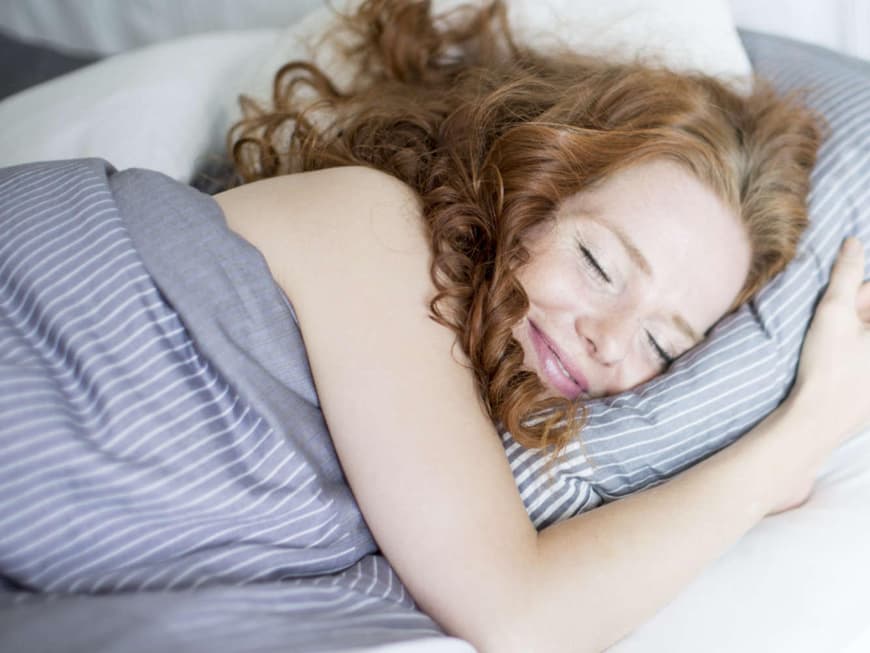
Sleeping through the night: what's the secret?
A little bedtime story first: nobody sleeps through the night for eight hours. On average, we even wake up 28 times (!) a night. This internal alarm clock is a remnant from the Stone Age to protect us from danger. "Sleeping completely through the night was never actually intended," explains the renowned sleep researcher Prof. Jürgen Zulley, former head of the Sleep Medicine Center at Regensburg University Hospital. Fortunately, we hardly ever notice waking up. Only those who are awake for longer than three minutes remember these interruptions. In any case, it is not the duration of our sleep that is decisive for our well-being, but rather the quality. And that means the deep sleep phase: "I can sleep as long as I want - if I don't have deep sleep, I'm not rested," Prof. Zulley sums it up. So when we talk about "sleeping through the night", we actually mean "sleeping well". And there are tricks to getting a good night's sleep.
Good to know: Which nose plasters help against snoring
Brooding chair: switch off your head and sleep better
A "brooding chair" can help when we lie awake at night and the carousel of thoughts starts to spin - sleep is usually out of the question. Especially when we stare at the alarm clock and know that we have to get up again soon. What helps here is a "brooding chair", which should be placed next to the bed. This means: get up, sit on the chair and actively think the thought through to the end. Then go to bed and finally sleep. It works!
Pillow knowledge: What is the best pillow to sleep on?
Whether a neck support pillow, side sleeper pillow, one with gel foam (good for allergy sufferers) or butterfly-shaped (for stomach sleepers), everyone has to decide for themselves. According to the German Society for Sleep Research and Sleep Medicine, a pillow should do three things: enable pain-free sleep, not force a bad posture and feel subjectively comfortable. However, it should not be too big or too high, otherwise the spine will bend too much.
22% of Germans take an afternoon nap. On average, we go to bed at 10.47 pm and wake up at 6.23 am
Mattress test: cold foam or spring core?
We change our posture 40 to 60 times a night. An optimal mattress must therefore be point-elastic and distribute the body weight evenly. This means that it gives way at the shoulders and hips to relieve pressure on the spine. Whether cold foam or spring core depends on your preferred sleeping position, your weight and how much you sweat. Caution: Test a new mattress for at least 15 minutes to feel whether you are lying straight. Slatted frame: How important are the boards under the bed? Most people have probably slept with their mattress on the floor, so the slatted frame is a bit of a stepchild in the bedroom - and wrongly so! This is because the slatted frame influences the firmness of the mattress by up to 40 percent. It determines how we feel when we lie down and ensures that we sleep better. Slatted frames with more elasticity and a sink-in depth of up to eight centimetres are recommended for people with a heavy build.
Sleep cycles: Do you know the 6:1 rule?
We humans are known to be creatures of habit. A regular sleep cycle has been proven to promote falling asleep and staying asleep - like the "6:1 rule". This means going to bed and getting up at exactly the same time six days a week. One day a week can be varied. This way, the body is only thrown out of rhythm once.
Power nap: taking too long a nap keeps you awake
People who don't sleep at night swear by the power nap. However, naps do not allow the so-called sleep pressure to build up properly and we lie awake again in the evening. Did you know? Exhausting yourself with sport in the evening in order to fall into bed tired afterwards is also a fallacy. Sport stimulates the circulation. It's better to go for a walk.
Source: LEA
